Excerpts from Jim Conrad's
Naturalist Newsletter
from the June 28, 2018 Newsletter issued from Rancho Regenesis in the woods ±4kms west of Ek Balam Ruins; elevation ~40m (~130 ft), N~20.876°, W~88.170°; central Yucatán, MÉXICO
SEED-HARVESTING FIRE ANTS ON TOBACCO
On Sunday the head-tall tobacco plant had looked as healthy as could be, but the next day all its leaves were drooping and already drying up. The plant's base was turning brown with the epidermis peeling off, as shown below:

Then I noticed a line of tiny black ants ascending and descending the stalk, as shown below:
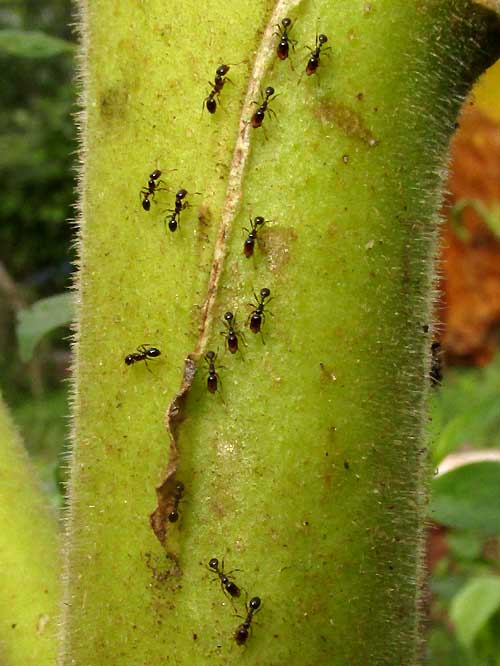
When I checked in the camera's viewer to see if things were in focus, something interesting turned up. In the above picture, notice that ants descending the stalk are bearing something in their mandibles, but those ascending, aren't. I pushed the camera's macro capabilities a little beyond what the camera was designed for to get a better look at what the ants were carrying. Below, you can see better in the somewhat blurry picture -- and note the ants' curious anatomy, seeming to have more constrictions in its body than normal:
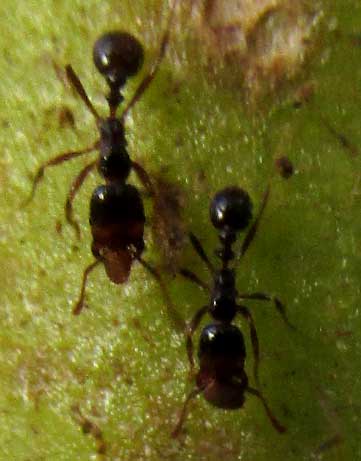
These were unusually small ants, so the brown, oval items being carried were minuscule. Well, tobacco seeds are minuscule, and my suspicions were confirmed by following the line up to the tobacco's fruiting capsules, which were covered with ants as shown below:
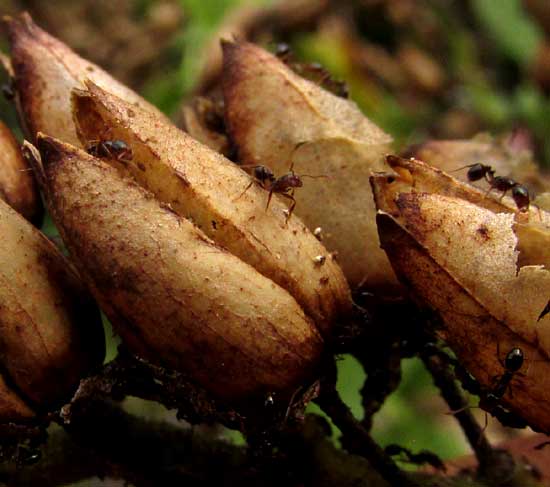
Following the ant line downward, I found it entering an opening in the tobacco plant's tissue near the ground -- maybe an opening excavated by the ants themselves, in the process killing the plant -- as shown below:
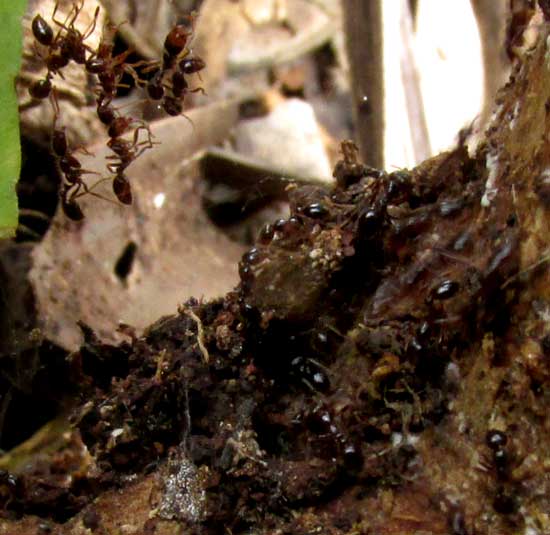
We've had seed-collecting harvester ants before, up in Texas. When pictures of ants in the various harvester-ant genera were consulted, it was noted that two large genera display such anatomy as ours, Aphaenogaster and Pogonomyrmex. I believe ours must be Pogonomyrmex*...
*UPDATE: In 2024 I upload the pictures on this page to iNaturalist, where quickly user "mettcollsuss" recognizes that they're not harvester ants at all, but rather Tropical Fire Ants, SOLENOPSIS GENIMATA -- a different fire ant species from what we had in Mississippi.
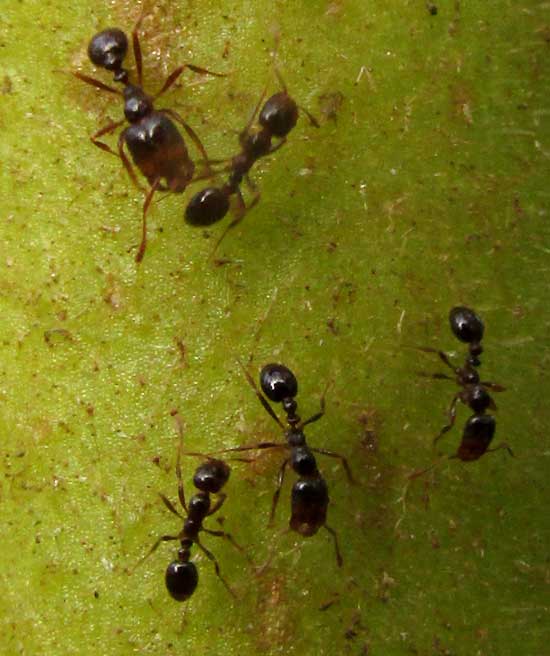
Images on the Internet of Tropical Fire Ants match ours, and I see that the species is distributed throughout most of the world's warmer areas, even in southern and central USA, but not in Europe. Moreover, Solenopsis geminata, which is native to Central and South America, harvests seeds. The 2018 study by L.-C. Lai and others entitled "Composition of harvested seeds and seed selection by the invasive tropical fire ant, Solenopsis geminata (Hymenoptera: Formicidae) in Taiwan," found that the species collected a wide variety of seeds, and since "... more than half of the plant species (52%) and the total seed number (63%) belonged to exotic species, the role of S. geminata might be negative because it tends to harvest exotic seeds and has a high opportunity to improve the establishment of exotic seedlings."
Tropical Fire Ants build nests similar to those we met in the US Southeast -- up to a thousand or more per acre. They're known to hybridize with the other fire ant species, as well as to spread by floating. It's quite possible that in the past I've encountered them in the US, confusing them with the Red Imported Fire Ant, Solenopsis invicta. However, Solenopsis genimata is the species normally occurring in the Yucatan, though there's at least one report of their being here, and I see nothing to keep them from spreading everywhere.